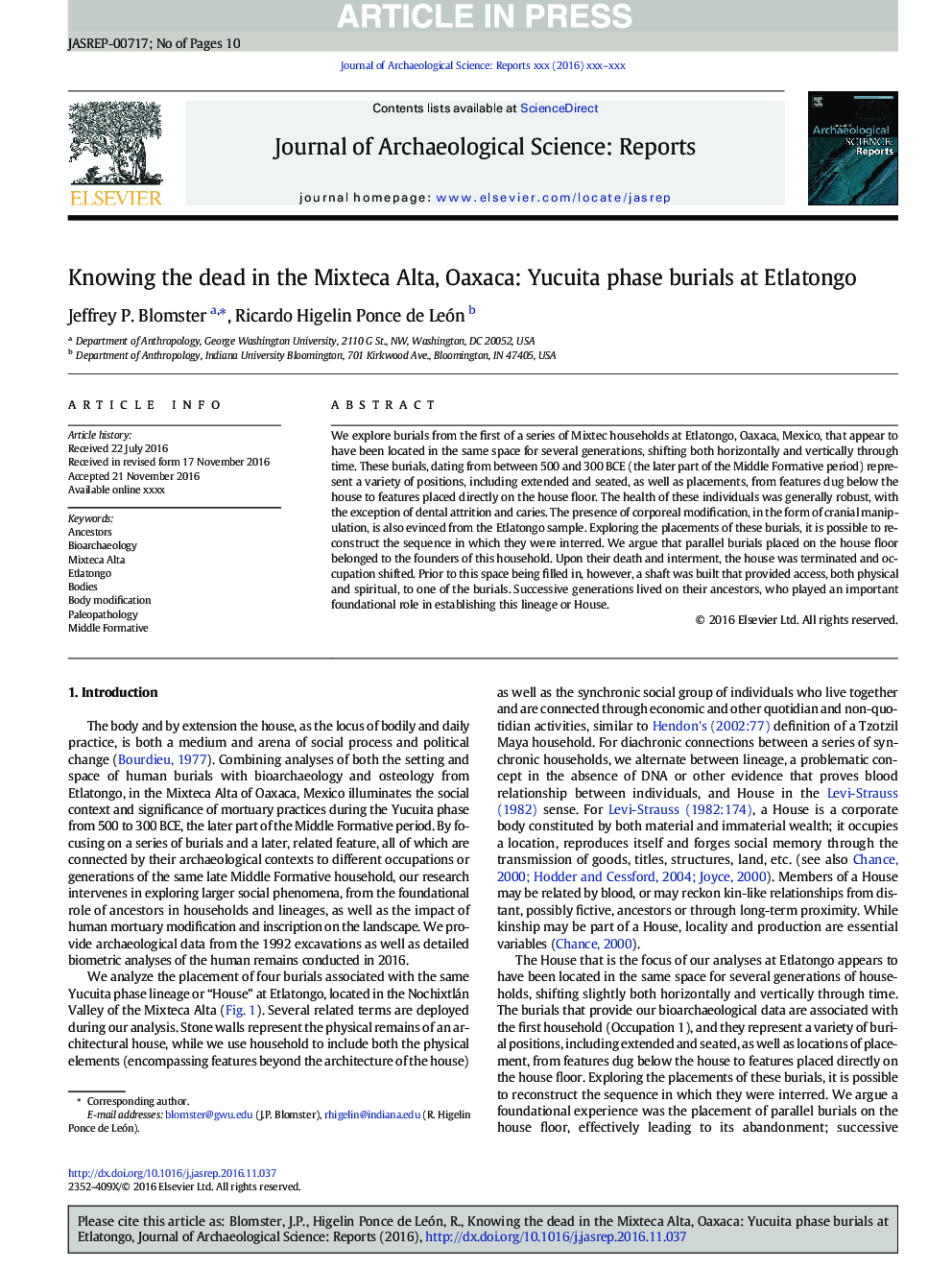| Article ID | Journal | Published Year | Pages | File Type |
|---|---|---|---|---|
| 5112385 | Journal of Archaeological Science: Reports | 2017 | 10 Pages |
Abstract
We explore burials from the first of a series of Mixtec households at Etlatongo, Oaxaca, Mexico, that appear to have been located in the same space for several generations, shifting both horizontally and vertically through time. These burials, dating from between 500 and 300Â BCE (the later part of the Middle Formative period) represent a variety of positions, including extended and seated, as well as placements, from features dug below the house to features placed directly on the house floor. The health of these individuals was generally robust, with the exception of dental attrition and caries. The presence of corporeal modification, in the form of cranial manipulation, is also evinced from the Etlatongo sample. Exploring the placements of these burials, it is possible to reconstruct the sequence in which they were interred. We argue that parallel burials placed on the house floor belonged to the founders of this household. Upon their death and interment, the house was terminated and occupation shifted. Prior to this space being filled in, however, a shaft was built that provided access, both physical and spiritual, to one of the burials. Successive generations lived on their ancestors, who played an important foundational role in establishing this lineage or House.
Related Topics
Social Sciences and Humanities
Arts and Humanities
History
Authors
Jeffrey P. Blomster, Ricardo Higelin Ponce de León,
